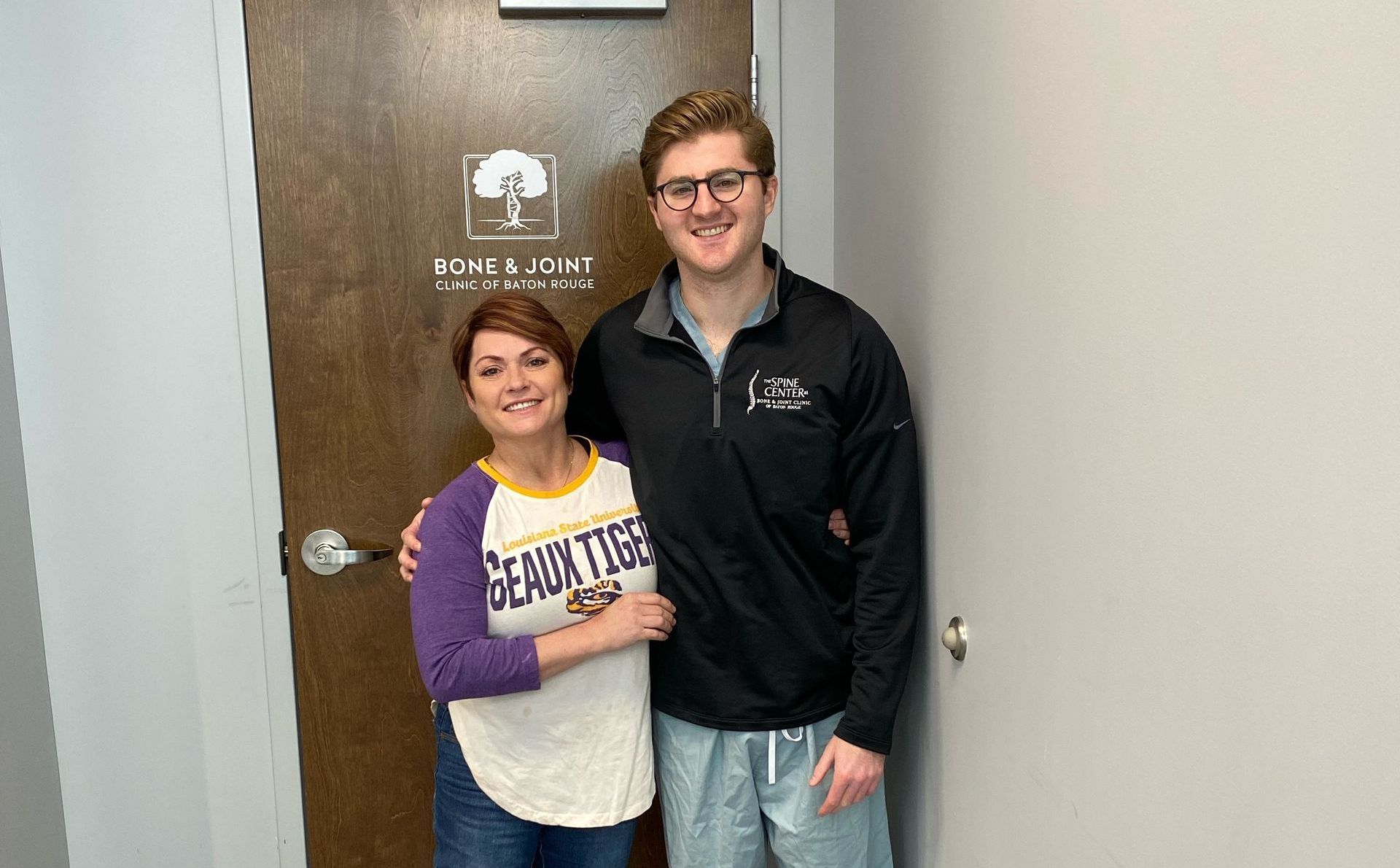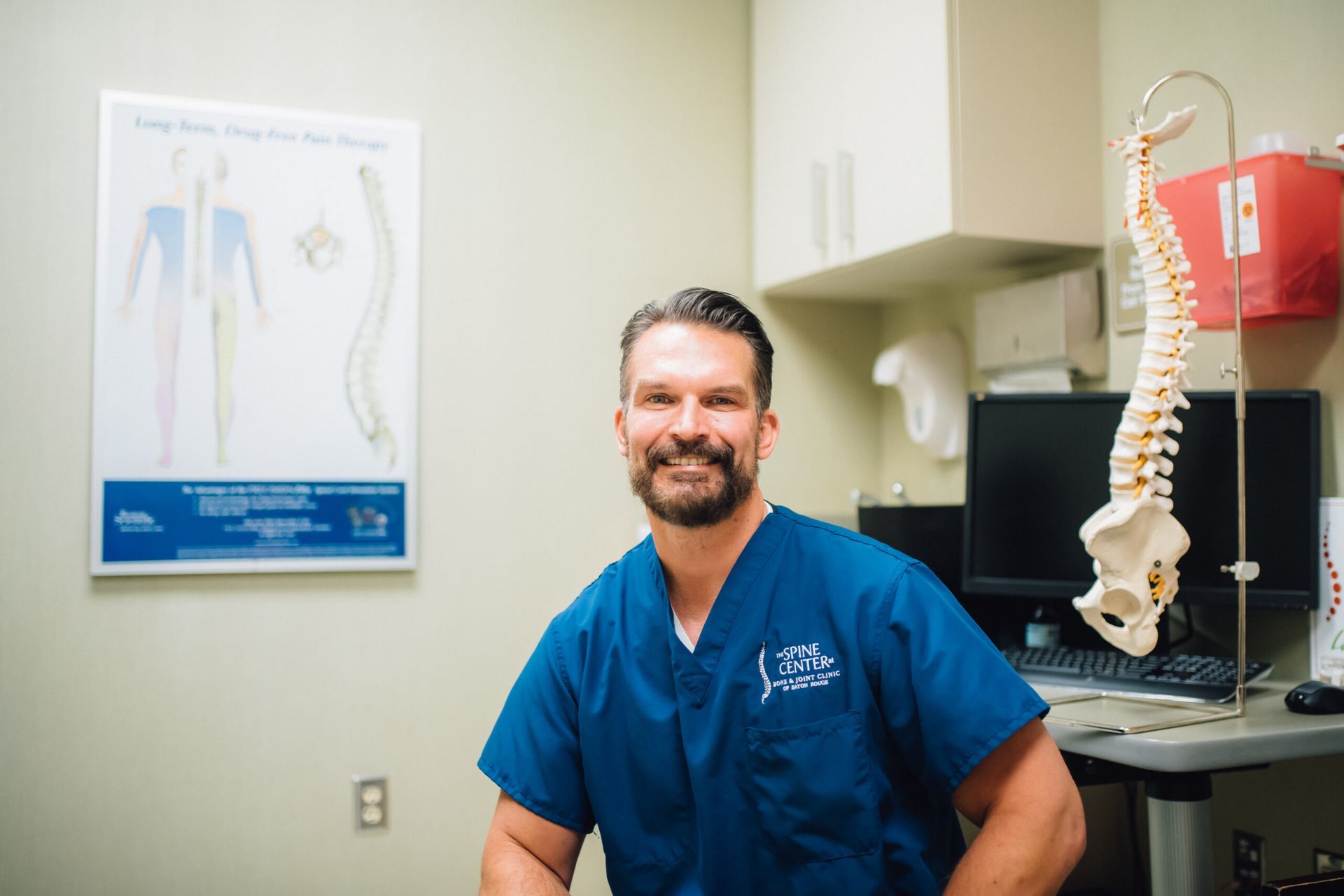Spinal Fusion Surgery in Baton Rouge
RELATED PAGES
What is Spinal Fusion?
Spinal fusion is a surgical technique used to fuse together two or more vertebrae in the spine. The purpose of the procedure is to eliminate motion between these vertebrae and any associated problems such as stretching of surrounding nerves, muscles, and ligaments. It is a viable option for pain relief in many patients who have spine instability due to injury or disease and can protect the affected area from future problems as well.
What Conditions Does Spinal Fusion Treat?
There are several conditions which can cause instability of the spine and which may benefit from a fusion to limit unnecessary motion between the vertebrae. It can also be useful in certain cases of spine deformity. Among the most common conditions leading to spinal fusion are:
- Arthritis
- Fractured vertebrae
- Degenerative disc disease
- Herniated disc
- Scoliosis
- Spinal stenosis
- Spondylolisthesis
Types of Spinal Fusion
There are multiple types of spinal fusion surgery with varying approaches. Among the more commonly performed fusions are:
- Fusion for Spinal Trauma – Whether cervical, thoracic, or lumbar, trauma occurring anywhere along the spine has the possibility of requiring surgical intervention. Among the most common problems resulting from trauma are herniated discs. Spinal fusions can address conditions like these by creating space in between vertebrae and restoring stability in the affected area through bone grafting and placement of hardware.
- Lumbar Decompression and Fusion – This particular form of spinal fusion is often used to address problems stemming from spinal stenosis. Due to the narrowing of the spinal canal, decompression is required in these cases to alleviate pressure on the nerves, while the fusion helps maintain the space in between vertebrae.
- Scoliosis Fusion – Scoliosis is an unnatural S or C-shaped curvature of the spine that tends to occur in pediatric patients just before puberty. In severe cases, when the curve reaches 45 degrees, spinal fusion may be warranted. Fortunately, results are often positive, with most curves being able to be reduced to at least 25 degrees.
How Does Spinal Fusion Work?
Spinal fusion is performed in an outpatient or hospital setting under general anesthesia. There are multiple techniques that may be used to perform the procedure, depending on the location of the fusion or factors such as patient health. Following anesthesia, the fusion surgery will be completed in three steps:
- Incision – There are various locations from which your surgeon can access the vertebrae. The specific location of your fusion will help determine which is used. Most commonly, the incision for a fusion will be made directly above or on either side of the spine. However, in some cases, the spine can be accessed through the front of the body with an incision in the abdomen for the lower back or an incision in the throat for the neck area.
- Bone Grafting – In order to fuse the vertebrae together, a bone graft must be used. There are multiple types of bone grafts that may present viable options for any given patient. In some cases, the bone can be harvested from the patient’s own pelvis. In others, a cadaver graft from a bone bank may be used. Additionally, there are synthetic bone graft materials which may also be an option. Your surgeon will help you better understand all options and which is best for you.
- Fusion – Once a bone graft has been selected and the incision made, the vertebrae can be fused together. In order to do this, the surgeon will position the bone graft between the vertebrae and then secure them together using metal plates and screws.
Spinal Fusion Recovery
Most patients will be able to receive their spinal fusion surgery in an outpatient facility and begin their recovery process at home. Immediately following the procedure, the recovery focus will be on pain management. For a brief period of time, prescription pain killers may be used to control discomfort. However, these should not be needed or used for an extended period of time.
For some patients, rehabilitation is another important step in the recovery process. In order to ensure that the bone heals properly and maintains good alignment, patients may undergo physical therapy to help them learn how to sit, stand, walk, and reposition themselves properly. Physical therapy can also help build muscular strength around the surgical site and ensure that patients maintain a good range of motion.
Spinal Fusion Surgeons in Baton Rouge
RELATED READING
Spinal Fusion Blogs
MOVE MORE, HURT LESS.
7301 Hennessy Blvd.
Suite 200
Baton Rouge, LA 70808
tel: (225) 766-0050
fax: (225) 766-1499
Bone & Joint Clinic of Baton Rouge, Inc. complies with applicable Federal civil rights laws and does not discriminate on the basis of race, color, national origin, age, disability or sex.
Click to view our notice.
Bone & Joint Clinic of Baton Rouge | All Rights Reserved.





